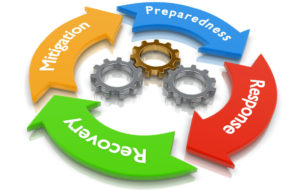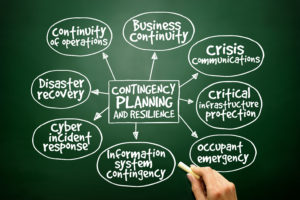 Disaster Recovery Planning (DRP) involves development of a documented process or comprehensive set of procedures that ensures the protection and recovery of an organization’s IT infrastructure in the event of a disaster. Continuous actions are required before, during and after a catastrophic event.
Disaster Recovery Planning (DRP) involves development of a documented process or comprehensive set of procedures that ensures the protection and recovery of an organization’s IT infrastructure in the event of a disaster. Continuous actions are required before, during and after a catastrophic event.
Business Continuity Planning (BCP) involves development of a strategy that allows an organization to conduct business activities at normal or near-normal performance levels following an incident that has the potential to disrupt or destroy the organization. Priorities are established based upon mission critical systems required for an optimum level of operations. This could be with or without the availability of IT or automated resources for acceptable periods of time. The BCP defines the business requirements for the DRP.
Successful organizations committed to providing the best possible experience to its customers and the best possible relationships with employees, stakeholders and suppliers develop policies that ensure the survivability of the organization. This includes contingency plans based upon the following factors:
Management acknowledgements
· Identification of mission critical systems and business functions
· Protection and safety of critical assets (personnel, public image, customer information)
· Requirement for Business Impact Analysis (BIA)
· Control financial loss
Continuous operations and IT availability through
· Risk assessment and mitigation
· Preplanning and sourcing
· Resiliency and preparedness
· DR/BC Plan documentation, review and testing
Key recovery alternatives
· DR sites (hot, cold, warm)
· Alternative business recovery location
· Disaster Recovery as a Service (DRaaS)
· Storage as a Service (StaaS, backup, replication)
· Server co-location
· Connectivity options